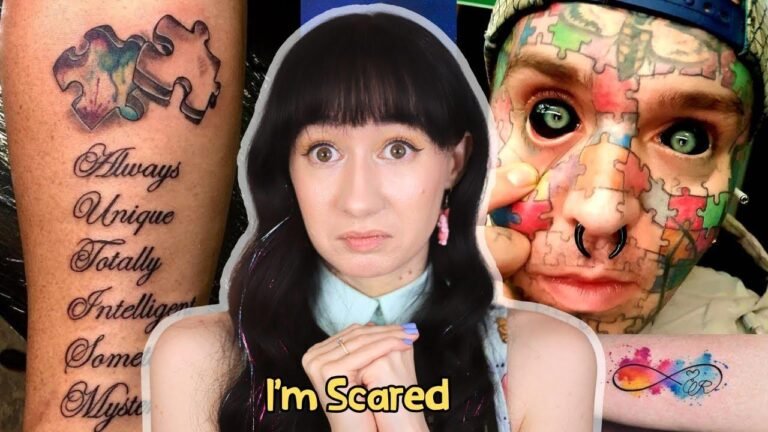✨Is it autistic masking or trauma fawning?✨
Autistic masking or trauma fawning? It’s like walking on eggshells, trying to blend in and please others. It’s a constant state of hypervigilance, adjusting and monitoring to fit in. But it takes a toll, leading to chronic pain and illness. Find the balance, know the differences, and recognize the impact. It’s not just about fitting in, it’s about protecting yourself. Stay safe and take care! ✨
The Complexity of Autism Masking and Trauma Fawning
In this article, we will explore the complexities of autism masking and trauma fawning, and how they intersect in the experiences of individuals with autism.
Understanding the Differences Between Masking and Fawning
Autism masking is a complex behavior that involves blending in with neurotypical individuals, while trauma fawning is a survival response that involves appeasing others. The similarities and differences between these two behaviors are important to understand, as they can impact the mental well-being of individuals with autism.
Key Takeaways:
| Autism Masking | Trauma Fawning |
|---|---|
| Blending in with neurotypical individuals | Appeasing others as a survival response |
| Complex behaviors that involve camouflage | Deep-seated response to trauma |
| Necessary for social survival | Can lead to fatigue and illness |
The Impact of Trauma on Autistic Individuals
It is not always simple to distinguish the impact of trauma on autistic individuals. The need to adapt to social strategies in order to survive in a neurotypical world can be inherently challenging for those with autism. Trauma fawning and appeasing behaviors can be deeply ingrained, especially in childhood, leading to hypervigilance and a constant need to camouflage one’s true self.
The Dynamics of Fawning and Camouflaging in Autism
The dynamics of fawning and camouflaging in autism are deeply rooted in the fight, flight, freeze, and fawn responses. Autistic individuals often combine these strategies to navigate complex social situations, leading to chronic hypervigilance and an overwhelming need to please others. This can result in emotional exhaustion and illness, as individuals constantly prioritize the needs of others over their own well-being.
Quote:
"The dynamics of fawning and camouflaging in autism are deeply rooted in the fight, flight, freeze, and fawn responses."
Understanding Trauma Fawning in Autism
Trauma fawning in autism involves a deep-seated need to appease and please others, often leading to an internal struggle between one’s true self and the fabricated persona created to survive in social settings. Autistic individuals may find themselves minimizing their own beliefs and thoughts, and ignoring their own needs in order to avoid detection and maintain a sense of safety.
Key Takeaways:
- Trauma fawning involves a constant need to appease and please others.
- It can lead to a disconnect from one’s true self and a chronic state of emotional exhaustion.
- The struggle between authenticity and survival is a central theme in trauma fawning.
The Role of Social Masking in Autism
Social masking in autism is driven by the hypervigilance and the need to camouflage autistic traits in order to engage more effectively with neurotypical individuals. This behavior is deeply rooted in the trauma fawning response, as individuals with autism may feel the need to present a version of themselves that is more socially acceptable.
Identifying Masking Behaviors in Autism
Recognizing masking behaviors in autism involves understanding the cues and signals that individuals use to blend in with neurotypical individuals. This can include mimicking conversations and gestures, monitoring eye contact and facial expressions, and assimilating into social settings to appear more neurotypical.
List of Behaviors:
- Mimicking conversations and gestures
- Monitoring eye contact and facial expressions
- Assimilating into social settings to appear more neurotypical
Conclusion
In conclusion, the intersection of autism masking and trauma fawning creates a complex dynamic for individuals with autism. The need to navigate social situations while coping with the effects of trauma can be emotionally and physically draining. Understanding and acknowledging these behaviors is crucial for creating a supportive and inclusive environment for individuals with autism.
FAQ:
Q: What is the difference between autism masking and trauma fawning?
A: Autism masking involves blending in with neurotypical individuals, while trauma fawning is a survival response that involves appeasing others.
Q: Why is it important to understand masking behaviors in autism?
A: Understanding masking behaviors is crucial for creating a supportive and inclusive environment for individuals with autism.
Bold Statement:
Understanding and acknowledging these behaviors is crucial for creating a supportive and inclusive environment for individuals with autism.
It’s important to remember that these are complex issues, and the impact of trauma fawning and autism masking can vary greatly from person to person. By creating awareness and understanding, we can work towards supporting individuals with autism in a more compassionate and inclusive manner. Thank you for reading, and take care. 🌟







